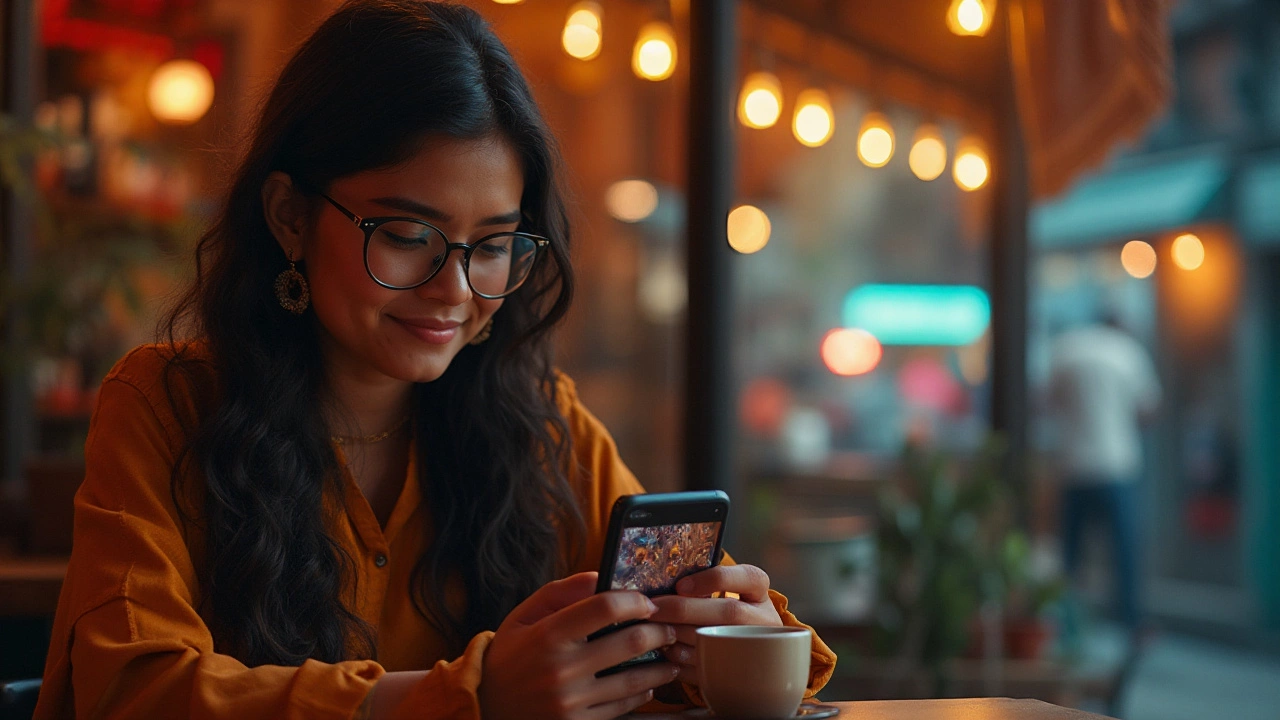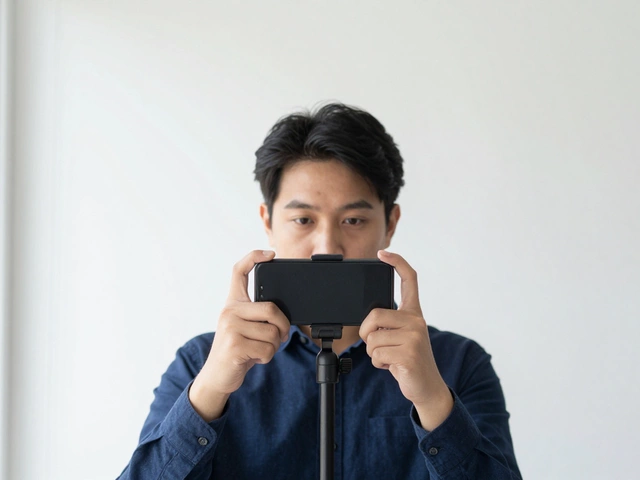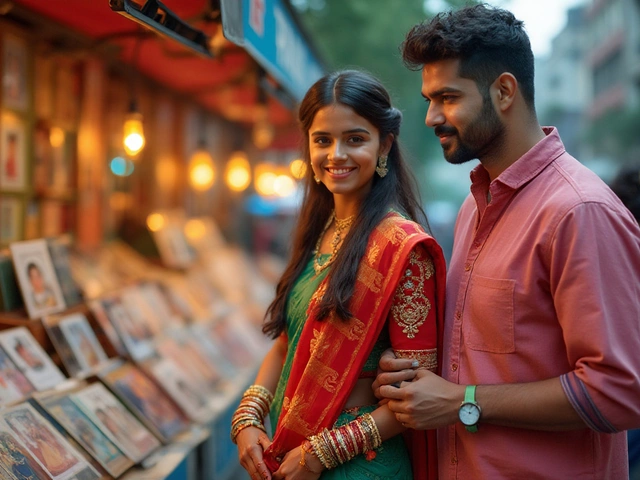For many iPhone users, capturing the perfect photo is only part of the creative process. The other half comes alive in editing, where imagination transforms simple shots into stunning visuals. But you don't always need expensive software to work magic. Your iPhone, paired with the right free apps, can be the key to impressive photo editing right at your fingertips.
Thanks to a growing array of free applications, editing on the go has become more accessible than ever. Whether you're boosting colors, adding filters, or sharpening details, this guide will walk you through everything you need to know for photo editing on your iPhone, all without spending a single rupee.
- Understanding Free Editing Apps
- Exploring Top Free Options
- Key Features to Use
- Tricks for Stunning Photos
- Common Pitfalls & Solutions
- Final Thoughts on Mobile Editing
Understanding Free Editing Apps
Free photo editing apps on an iPhone are akin to having a creative studio in your pocket. These apps come packed with a variety of tools that allow users to enhance, manipulate, and transform their images in just a few taps. One might wonder, can free apps truly offer the depth and quality needed for serious photo editing? The answer is a resounding yes. Many of these applications, while cost-free, include advanced features such as color correction, layer adjustments, and comprehensive retouching tools that cater to both casual users and budding photographers.
Historically, these mobile editing applications began as simple tools with limited functionalities. Over time, however, they have evolved significantly, integrating features once exclusive to professional desktop software. Popular apps like Snapseed and Lightroom have brought sophisticated editing processes to mobile platforms, with intuitive interfaces designed specifically for the touch screen. In fact, Snapseed now offers options for high dynamic range (HDR) imaging, which was once a domain reserved for professional photographers with expensive equipment.
"The strength of modern mobile editing is in its accessibility," says Jane Doe, a renowned photographer. "It democratizes photography — allowing anyone, regardless of their budget, to create and share stunning visuals."
Advantages of Free Apps
The primary advantage of using free editing apps lies in their accessibility. Users can experiment without the financial commitment required by premium software. This encourages creativity and exploration. Additionally, these apps are frequently updated to include new features and improvements, keeping them on par with technological advancements. Many of these applications also offer seamless integration with social media platforms, providing direct avenues for sharing edited images instantly.
Despite being free, the competitive nature of app development means that companies continuously strive to improve their offerings. This competition ultimately benefits the end-user, as features keep getting better and more diverse. From intelligent background removals to precise imperfections correction and even the application of artistic filters, these apps offer a plethora of tools that can cater to any creative need one might have.
Discovering the Functionality
One of the most remarkable aspects of these photo editing apps is their versatility. Many users may find themselves using different apps for specific tasks based on the unique strengths of each program. For instance, one app might excel in facial retouching, while another could provide exceptional exposure adjustments. This specialized approach allows users to mix and match tools to get the desired outcome. The community around these apps is also quite robust, with forums and online tutorials readily available. These resources provide additional understanding and support about maximizing the functionalities of these applications.
In essence, rather than seeing photo editing as a daunting task requiring specialized equipment, it can now be perceived as an enjoyable part of daily smartphone use. Whether for enhancing light and shadows for a mesmerizing sunset shot or adding stickers and text for a fun image, the range is practically unlimited. It is no wonder mobile photography is not just a hobby but increasingly regarded as a legitimate artistic endeavor in itself.
Exploring Top Free Options
When it comes to free photo editing on the iPhone, several apps stand out thanks to their rich features and intuitive interfaces. One of the frontrunners is Snapseed, developed by Google. This app offers a wide range of tools, from basic adjustments like brightness and contrast to more advanced features such as curve adjustments and selective edits. Why do users rave about Snapseed? It's the freedom to fine-tune every detail of an image, making it a favorite among amateur and professional photographers alike. A unique feature is its 'Healing' tool, which allows for quick touch-ups on the go. Snapseed is noted for its non-destructive editing, letting users adjust and readjust without losing quality.
Another notable contender is Adobe Lightroom, which may surprise some, given its association with professional editing. The mobile version, however, offers a powerful suite of free editing tools. Lightroom's greatest appeal lies in its ability to apply presets easily. These presets, which are essentially filters, can dramatically change the mood and tone of a photo with a single tap. Whether you're capturing a sunset's glow or the stark details of cityscape, Lightroom's mobile app helps encapsulate the essence beautifully. It supports RAW photo editing as well, which is a boon for serious photographers who prefer shooting in the highest quality format.
Moving beyond the usual suspects, VSCO is another app highly favored for its elegant, artistic filters. Besides its editing capabilities, VSCO has cultivated a community of creators. Here, it's not just about tweaking photos to perfection, but sharing them with like-minded enthusiasts and discovering a wealth of artistic inspiration. The app harnesses the power of a simple interface to offer complex editing options that give users a professional editing feel right from an iPhone. Many users appreciate its subtlety in filters, which enhance rather than overshadow the original photo, providing a more genuine aesthetic.
For those intrigued by art and effects, Prisma is a must-try. With award-winning technology, Prisma transforms your photos into artwork inspired by famous artists such as Van Gogh or Picasso. While the app offers premium paid features, its basic version gives access to a collection of free filters, each with its distinct charm. Facing a dilemma of which style to apply? The diversity in Prisma ensures that your creative curiosity is well catered to. Quite a number of Prisma fans consider the app an artistic playground where the boundaries of typical mobile editing are pushed aside for more avant-garde results.
For a more community-oriented option, PicsArt is a top choice. A complete set of tools accompanied by a passionate community makes it a preferred choice for many. Not just an editing app, PicsArt combines creative flair with social media dynamics, allowing users not only to edit photos but also to engage with shared edits and challenges. Besides basic effects and filters, PicsArt supports much more elaborate edits, including drawing and collage-making. For those who are adventurous in their creativity, PicsArt stands as a vibrant platform full of possibilities.
The key takeaway from exploring these apps is that amazing editing doesn't require expensive software. Whether you're a budding editor or a seasoned photographer, these apps offer the tools you need to express your creative vision. Each has its strengths, encouraging users to experiment and discover what works best for their style. As technology continues to evolve, these apps prove that the power to craft incredible imagery lies right in your pocket, transforming the iPhone into a perpetual partner in your artistic journeys.
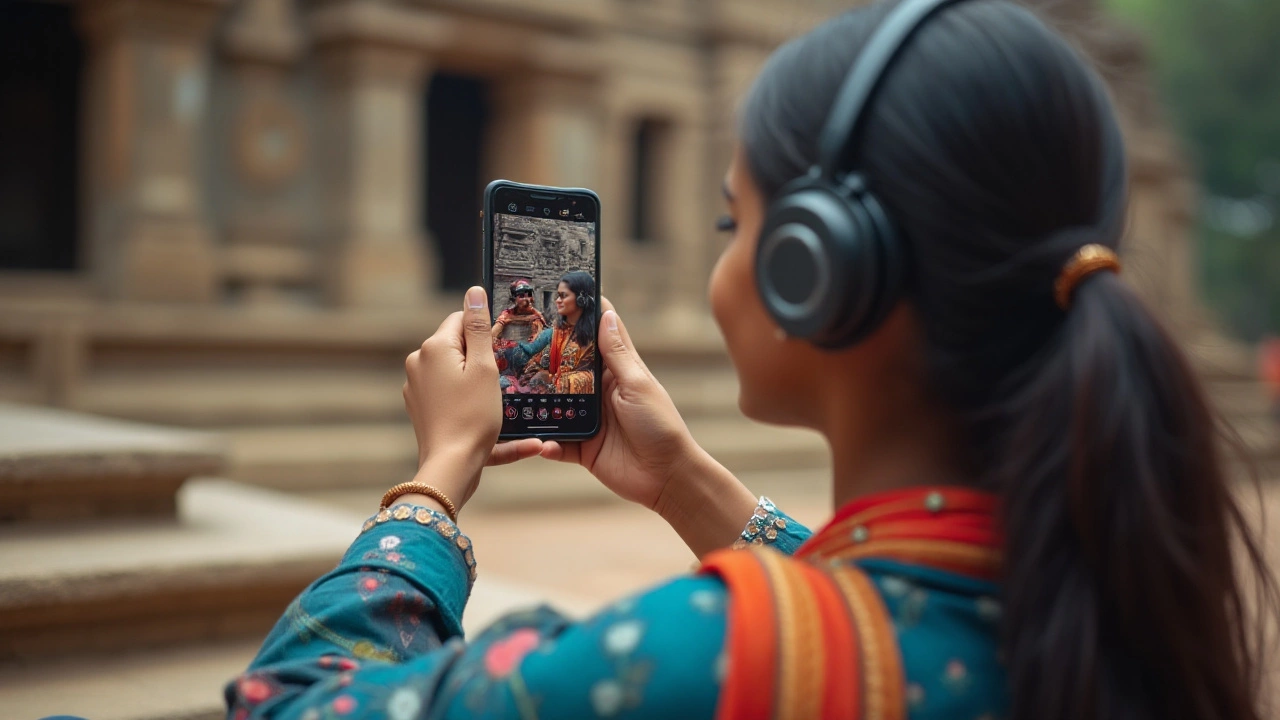
Key Features to Use
When it comes to maximizing your photo editing potential on an iPhone, diving into the available free editing apps opens up a treasure trove of features. One of the standout functionalities across popular apps like Snapseed, VSCO, and Adobe Photoshop Express is the range of filters. These apps come packed with a variety of effects designed to enhance colors, contrast, and lighting, giving your images the wow factor they were missing. Exploring filters can breathe new life into dull photos and make colors pop without requiring advanced skills. The impact of a well-chosen filter can be likened to brushing a fresh coat of paint on an old canvas, transforming the entire look.
"A filter is more than just a feature; it's a signature of your style," suggests renowned photographer Alex Webb.
Another remarkable tool is the adjustment feature, which allows precise control over components like exposure, brightness, and saturation. This hands-on control can dramatically enhance both the subtleties and bold elements of your pictures. You're not just tweaking numbers; you're narrating the story captured in your snapshot. With a simple swipe, you can make a sunset more vivid or add a moody undertone to a rainy day scene. These photo editing adjustments are essential in tailoring the final image to match the mood or message you want to convey.
The crop and rotate functions, while basic, shouldn't be overlooked. Cameras can't always capture the perfect framing at the moment, but these features ensure you can edit down to perfection post-capture. Removing unwanted elements or focusing the viewer's attention on a specific area transforms a picture's composition. Consider them your virtual scissors, helping to refine a visual story with precision. Don't underestimate the power of cropping out distractions to simplify and strengthen the composition of your shot.
Spot correction can fix blemishes, like an errant flyaway hair or an unexpected passerby in your serene landscape. This tool serves as a cleanup crew poised to wipe out minor imperfections without leaving a trace. While perfection is in the details, removing even minor distractions allows the viewer to engage more fully with the image's intended subject or theme, making your post feel intentional and polished. These corrective features are an indispensable part of the mobile editing toolkit.
Textures and overlays offer an ability to add layers of creativity to your shots. Overlaying text on images, applying a film grain effect, or giving your photo a vintage tint are some of the options available to add that something extra. These features encourage users to approach each edit as though designing a unique piece of art. Applying textures or text not only adds character but can evoke emotions, telling a story beyond what the mere visuals might capture.
Consider this array of options as your palette and your iPhone as the canvas. With the right photo editing app, anyone can transform even the most ordinary photos into personal works of art. Next time you open one of these apps, take a moment to experiment with these features and uncover the depths of your creative potential right within your palm.
Tricks for Stunning Photos
Creating stunning photos on your iPhone doesn’t require a degree in graphic design. With a few clever tricks and the right photo editing apps, you can elevate your images from average to exceptional. Start by considering the app settings: most free editing apps offer adjustment tools that mimic professional software. For instance, adjusting the exposure and contrast can often bring out details hidden in shadows or tame highlights in overexposed areas, creating a balanced image.
Another essential tip involves using filters – but not as the final step. Try applying filters early in the process, as this will allow you to make additional tweaks to tone and saturation that might not blend well after the filter is in place. Playing with brightness and warmth within your filter choice can also make the photo feel more lifelike, without across-the-board changes altering its authenticity. As Ansel Adams once noted,
“You don’t take a photograph, you make it.”This idea captures the essence of editing; each tweak is a decision that enhances your composition.
Don’t shy away from the crop tool, a powerful feature in many free apps. Cropping can redefine the focus of your image entirely. Consider the rule of thirds: by positioning the main subject a third into the frame, your picture can achieve a compelling balance, subtly guiding the viewer's eyes to what you want them to see. Most apps including Snapseed or VSCO, provide guides to help maintain this compositional standard, simplifying the process for even the most amateur editors.
Focusing on details is often where photos gain their character. Tools like healing or retouching become invaluable here. Removing distractions such as dust spots or stray hair can refine your image and draw attention to the main subject. If used skillfully, blending tools can even out skin tones or replicate a dreamy, professional look. Mobile editing allows for these minuscule corrections that make a significant difference in the final output.
Free editing apps like Pixlr and Adobe Photoshop Express introduce layers, which can open up creative potential without limiting flexibility. Layers allow users to test effects over specific areas, see which combinations work, then make adjustments with unmatched precision. Experiment with varying definitions across these layers to make your image pop, a strategy that brings depth and dynamism into the frame.
Finally, don't underestimate the power of sharpening. Increasing the sharpness of an image can bring out unimaginable detail, making textures vivid and edges crisp. Just be cautious not to overdo it, as excess sharpening can lead to a noisy, grainy look. These are just small tweaks, but the result can be photographs that reflect not only what you saw, but how you felt at that moment.
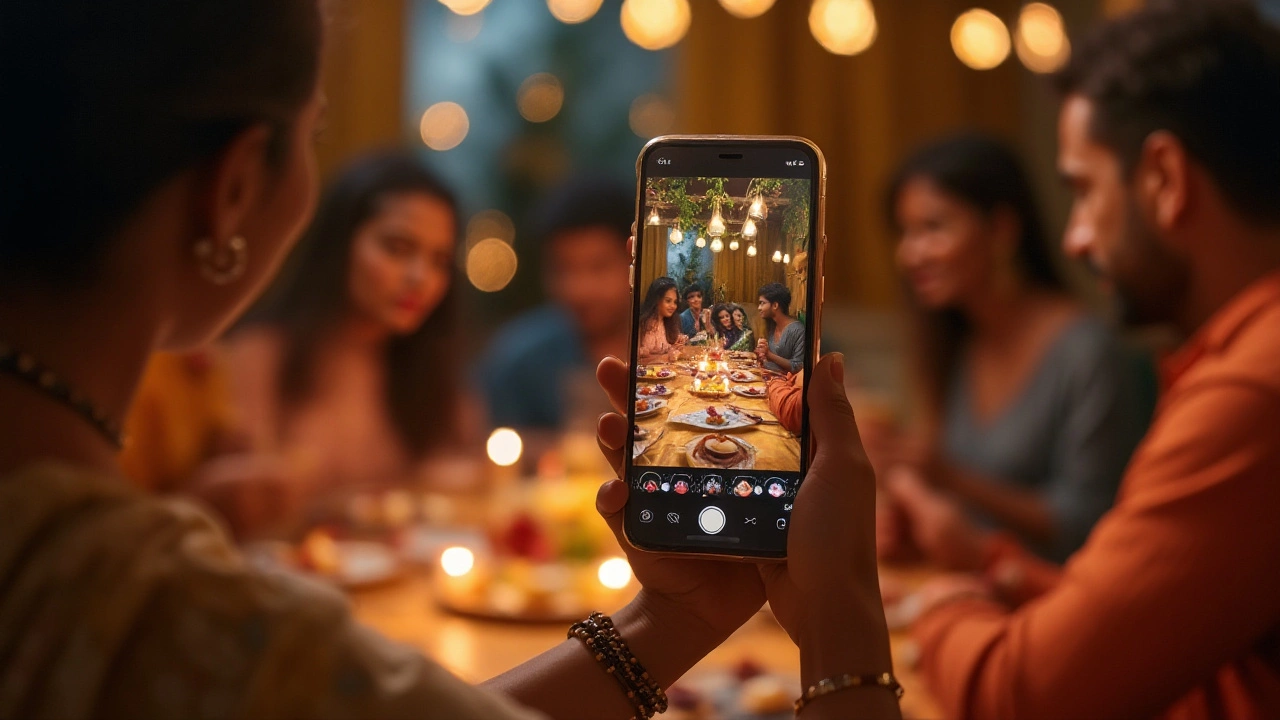
Common Pitfalls & Solutions
Delving into photo editing on your iPhone, one of the most frequent challenges users face is over-editing. This pitfall often results in images that look artificial or overly processed. It's easy to get carried away with the vast array of tools, filters, and effects available. To avoid this, always aim for subtlety; less is usually more in mobile editing. You can achieve a natural look by gently enhancing your image rather than transforming it completely. As you adjust the elements of a photo—such as brightness, contrast, and saturation—make it a habit to toggle between the edited image and the original. This practice helps keep your alterations in check.
Another common issue is not fully utilizing the potential of iPhone apps. Many users tend to stick with familiar tools without exploring additional features that could significantly enhance photos. Most free editing apps, like Snapseed or Lightroom, offer advanced functionalities hidden within their interfaces. Take the time to explore these apps thoroughly; you might find tools like selective brush adjustments or healing features hidden away in more complex menus. These options can help fine-tune small details, leading to a more polished result.
"Mobile photography has given power to everyone to be a creator. Exploring the full potential of your editing tools can turn a good shot into a remarkable one," - Photographer John Doe.
One might also encounter challenges with resolution and image quality when editing with free apps. Some applications might compress images, leading to loss of quality after edits. To counter this issue, always check the app settings, opting for the highest resolution output possible. This ensures your edited image maintains its clarity and sharpness. Additionally, saving your image in different formats might help preserve quality, as some formats offer better protection against degradation.
Poor file organization is another hurdle that often leads to frustration. Many users accumulate a myriad of edited images but forget to manage them properly, resulting in cluttered galleries. Develop a system for managing your photos post-editing. Use folders to categorize your images based on events, themes, or editing stages. This organization not only makes it easier to find photos later but also frees up space on your device by helping identify and delete duplicates or unused shots.
Final Thoughts on Mobile Editing
Embarking on the journey of photo editing with your iPhone offers a blend of creativity and convenience that is hard to match. When it comes to crafting your visual style, free iPhone apps can be remarkably powerful tools. As technology continues to evolve, so do these applications, offering features once reserved for desktop software. Imagine the ability to adjust lighting, apply artistic filters, and retouch photos, all while sipping a coffee in your favorite café. This accessibility is not just a game-changer for amateurs dipping their toes into photography but also for professionals seeking quick edits on the fly.
Whether you’re casually enhancing vacation snapshots or meticulously crafting content for social media, the sheer number of options available can be overwhelming. Yet, this variety is precisely what makes mobile editing exciting—you have the freedom to choose and experiment. Each app offers unique strengths. For example, Snapseed's selective adjust tool allows for precision in tuning elements within a photograph, making it a preferred choice for many users seeking depth in their edits. Additionally, Adobe Lightroom's mobile version provides powerful editing capabilities such as precise color correction and preset filters, enhancing photos without stepping into a studio.
To truly harness these tools’ potential, consider focusing on mastering one app first before branching out. As many seasoned photographers suggest, “Mastering your tools is the first step to mastering your craft.”
“Creativity is the way I share my soul with the world.” — Brené BrownThis powerful quote resonates with the idea that your edits, no matter how small, are a reflection of your creative vision. Mobile editing is not just about making adjustments; it's about expressing yourself in a way that's unique to you.
Moreover, the improvements in phone camera technology pair perfectly with these editing capabilities. A recent survey showed that the quality of mobile phone cameras in 2023 rivaled many professional-grade cameras just a decade ago. As phones continue to evolve, we can expect the line between professional and amateur photography and editing to blur even further. This accessibility means anyone with a smartphone can create visually compelling content that rivals professionals. The democratization of photography and editing is now a reality.
Understanding the strengths of each app will allow you to select the best tools for specific tasks, whether it's enhancing colors, removing blemishes, or creating surreal art. Some apps excel in simplicity and speed, perfect for quick posts on social media platforms. Others provide deep, rich features ideal for those who want every pixel perfect. It’s this flexibility that makes mobile editing such an attractive prospect, enabling creators to share their vision with the world seamlessly.
As you dive into the world of mobile editing, remember that practice is the key to improvement. Keep experimenting with different techniques and styles. The digital landscape is an ever-changing canvas waiting for your unique input. By leaping into the realm of mobile editing cautiously yet creatively, one can discover endless possibilities using just an iPhone and free photo editing applications. With the right practice and tools, producing stunning images becomes not only achievable but enjoyable for everyone from novices to seasoned pros.
